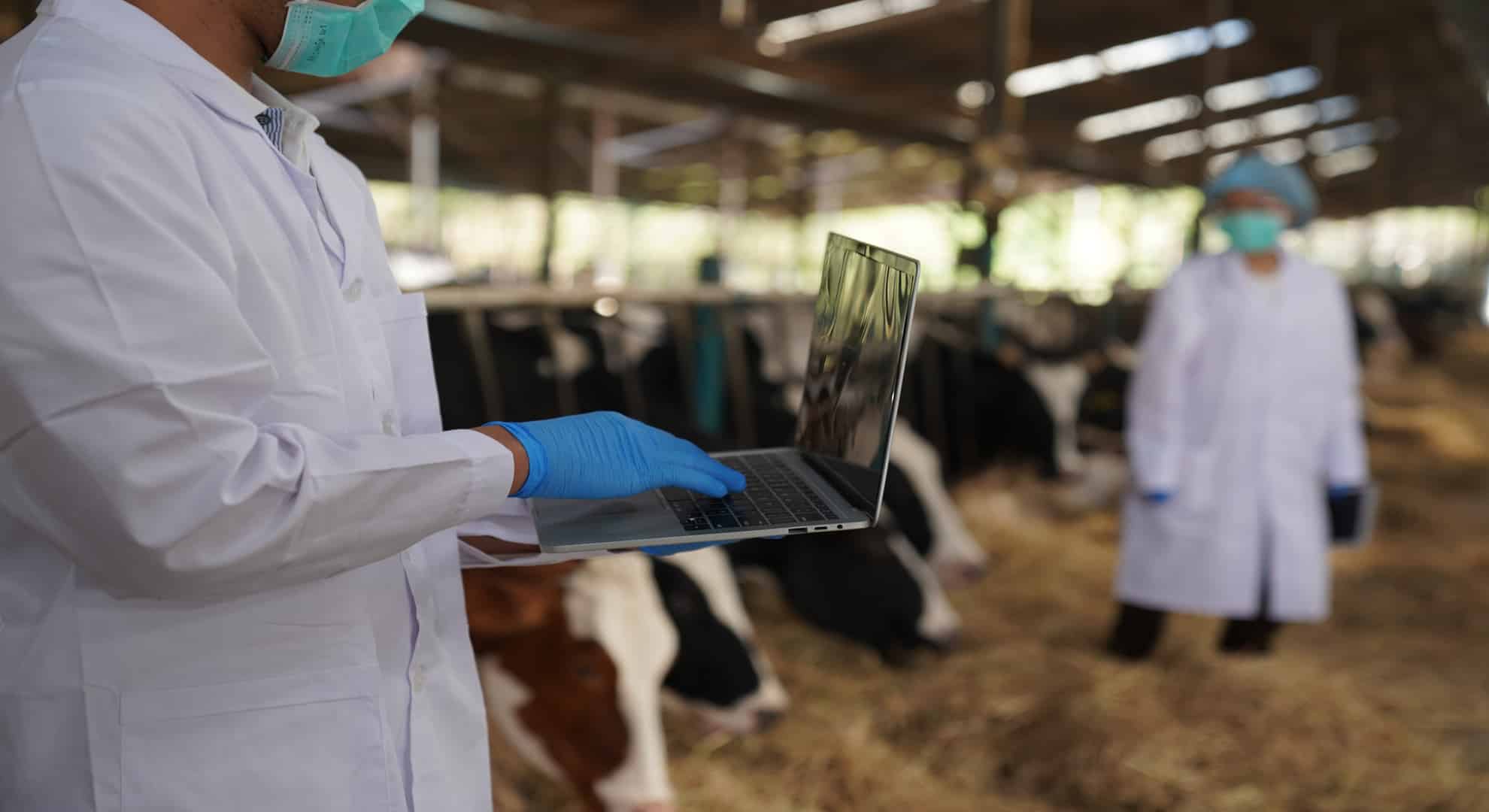
08 Jul Digitalisation in the livestock sector
Spain is the leading European producer among the 27 EU member states of olive oil (40.5%), pork (21.7%), citrus fruits (62.4%) and sweet fruits (28.2%); it’s also the third biggest producer throughout the EU of poultry (13.2%) and cattle farming (11.2%). With these figures in mind, it’s easy to understand the importance and strategic weight of the primary sector for the Spanish economy, as well as the need for the country’s agriculture and livestock sector to appreciate and benefit from the opportunities technological innovation and digitalisation can offer the industry.
Besides the obvious productivity benefits, greater efficiency and a competitive position in both a European and international context, taking advantage of digitalisation also paves the way to providing the livestock sector – as well as the agricultural sector – with better assets for positioning itself as a sustainable market, an unavoidable move considering the immediate and future challenges posed by global warming.
Connectivity, a basic building block for livestock digitalisation
According to the Spanish Government’s 2021-2023 Second Action Plan on the Digitalisation Strategy of the Agri-Food Sector and the Rural Environment, there are three fundamental starting points around which efforts must be united and focussed:
- Reducing the digital divide
- Promoting use of data
- Promoting business development and new business models
These, and other actions designed to promote digitalisation, have seen significant financial support from the Spanish Government – €17,986,846 for 2022 and €15,112,570 for 2023 – but, in order to be fully effective, they require (a) connectivity infrastructure that facilitates digitalisation without signal cuts across the country, (b) training and updating of technological skills among farmers, and (c) economic support for introducing the necessary systems and innovations on farms.
In terms of new business models, some very interesting initiatives are already being rolled out, such as one developed by Digitanimal, an application aimed at monitoring and managing the welfare and control of livestock on intensive farms. Carlos Callejero, the organisation’s CEO, explains that “the response from farmers has been very positive, especially considering the technology may seem complicated at first glance. The benefits it offers can help farmers overcome that fear and encourage them to get to know the system”.
How digitalisation can help the livestock sector
As in the case of Digitanimal – focussed on geolocating cattle, monitoring weights, oestrus cycles, pregnancy and calving, etc.— there are other innovations around digitalisation that could represent an important leap forward for the sector. These include:
- Automated systems to regulate ventilation and temperatures on farms
- Robotic surveillance and monitoring cameras
- LED lighting for farms and other facilities
- Drones for monitoring remote grazing in real time
- Robotic machines for automated milking
Sustainable extensive livestock farming, according to the data
These technological aids have a direct impact on productivity but, in addition, mixing digitalisation and livestock farming also has a pull effect on environmental sustainability. This is demonstrated by ongoing research, including work carried out by the Aragon Engineering Research Institute (I3A) in the Aragonese Pyrenees.
Together with I3A research groups, ASAJA Huesca, the SCLAS Cooperative and researchers from the Pyrenean Institute of Ecology are also taking part in this project, assessing the positive impact that extensive livestock farming could have, through grazing, on the development, evolution and maintenance of silvopastoral ecosystems, in particular, and on the quality of the environment in general. This work is part of the Quantification of the Environmental Impact of Extensive Livestock Farming in Aragon project (GCP2019004100) and has received funding from the European Union (ERDF) and the Government of Aragon.

